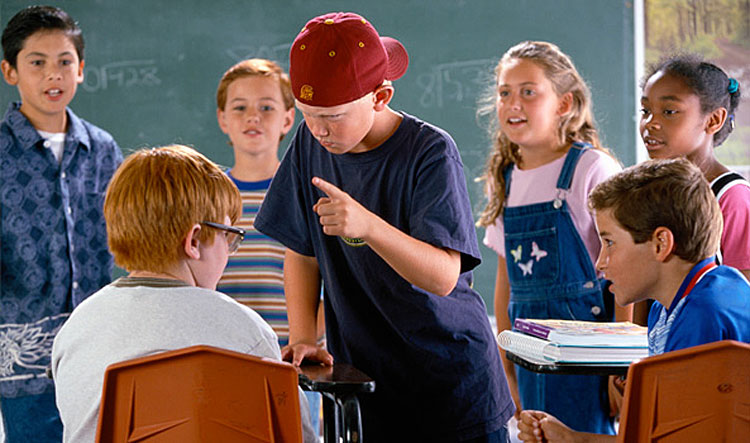By Scott Turnbull, Superintendent Soquel Union Elementary School District
“Each of us deserves the freedom to pursue our own version of happiness. No one deserves to be bullied.”
— Barack Obama

I want to tell you what SUESD is doing about the issue of bullying. First, I want to applaud SUESD teachers and staff for creating positive school environments. When I started in SUESD last year, it became immediately apparent to me that this issue was important to everyone here. Our teachers build caring classroom cultures, which are a most important step in combatting bullying. No specific program can match the power of classroom instructors teaching compassion.
SUESD defines bullying as, “A pattern of behavior when a person repeatedly uses power in an intentional manner, including verbal, physical, or written conduct or intentional electronic communication against one or more students. Harassment includes actual or perceived negative actions that offend, ridicule, or demean another individual with regard to race, national origin, marital status, gender, sexual orientation, gender identity, religion, ancestry, physical attributes, socioeconomic status, familial status, physical or mental ability, or disability.
“Intimidation is subjecting an individual to intentional action that seriously threatens and induces a sense of fear and/or inferiority. Bullying, cyberbullying, harassment, and intimidation are strictly prohibited by federal law and will not be tolerated in Soquel Union Elementary Schools (Board of Education Policy 5131.2).
“Students who engage in behaviors that constitute bullying, cyberbullying, harassment, or intimidation will be disciplined according to the procedures set forth in this student handbooks and Soquel Union Elementary School District’s regulations. Students, parents and close relatives, and/ or staff are encouraged to report any acts of the above to the school administration or designee.”
Having this consistent definition of bullying across the district is one important step in combatting bullying. Another important step we have taken in this effort is to have each school produce an Anti-Bullying Plan. Each of our schools now has one of these plans in the large poster-sized version posted at their school in English and Spanish. You can find these plans also posted digitally on our district website.
The Anti-Bullying Plans are intended to be clear and concise. They provide consistency where necessary. For example, the steps for dealing with bullying either as a victim or a witness are very consistent across all sites. The plans also allow for necessary flexibility. For example, each school has several programs in place to help teach positive behavior and combat bullying.
Some of these programs are consistent district-wide such as the implementation of the district’s Counseling Program and employing Campus Monitors at each school site. Some programs, though, are unique to one or two school sites. Some examples include Simon’s Hook, Second Step, Concentrated Anti-Bullying Week, Mind Up, and much more. Our middle school (New Brighton) is in the initial phase of implementing a dynamic program called W.E.B. (Where Everyone Belongs).
Those are some of the steps we are taking from the ground level. From a broader perspective, the district is also engaged in the initial phase of putting systems in place related to social-emotional learning and supporting positive student behavior. Specifically, there are two systems, MTSS (Multi-Tiered System of Supports) and PBIS (Positive Behavior Interventions & Supports).
The California Department of Education defines MTSS as, “An integrated, comprehensive framework that focuses on CCSS, core instruction, differentiated learning, student-centered learning, individualized student needs, and the alignment of systems necessary for all students’ academic, behavioral, and social success. MTSS offers the potential to create needed systematic change through intentional design and redesign of services and supports that quickly identify and match the needs of all students.”
On the website, www.pbis.org, PBIS is defined as, “A framework or approach for assisting school personnel in adopting and organizing evidence-based behavioral interventions into an integrated continuum that enhances academic and social behavior outcomes for all students. PBIS is NOT a packaged curriculum, scripted intervention, or manualized strategy. PBIS IS a prevention-oriented way for school personnel to (a) organize evidence-based practices, (b) improve their implementation of those practices, and (c) maximize academic and social behavior outcomes for students. PBIS supports the success of ALL students.”
We know that bullying is an issue that must be confronted directly. We also know that getting to the root of bullying behavior takes a systems-wide approach. With our district’s Anti-Bullying Plans, in conjunction with initial steps of MTSS & PBIS implementation, we are addressing the issue at both the ground and systems-level. SUESD is committed to provide ALL children with the opportunity to prosper; by supporting their social-emotional learning, we reduce the likelihood of bullying and remove possible barriers that may interfere with our students’ learning.